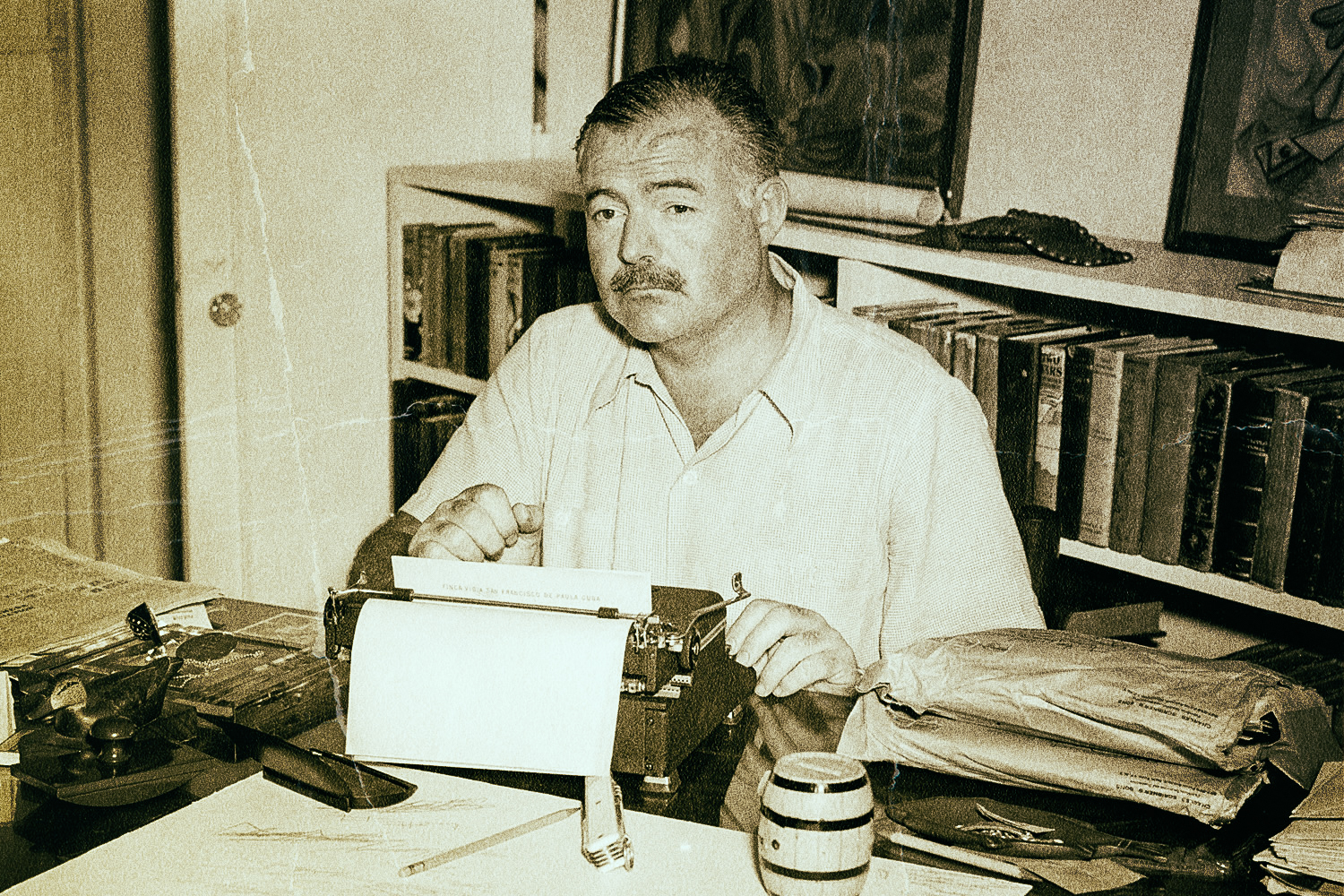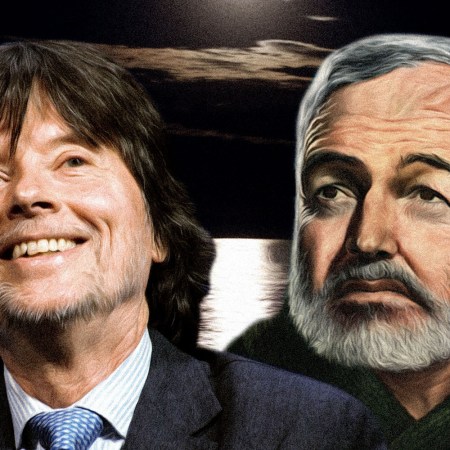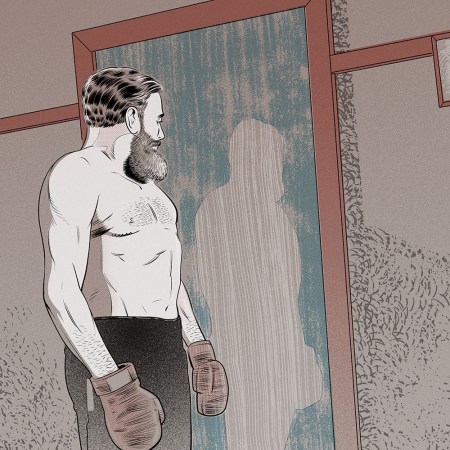The word “charisma” is overused. I recently heard someone say that Ted Cruz’s beard has undeniable charisma. It does not. Like a stripped screw, this overuse has separated the word from its definition: compelling attractiveness or charm that can inspire devotion in others.
The poet Archibald MacLeish once said that with the exception of FDR, Ernest Hemingway was the only man he knew who “could exhaust the oxygen in the room just by walking into it.” In other words, he was man of great charisma. Even before Hemingway became Hemingway, he was a magnet of vitality, the kind of guy you’d meet once and desperately want to like you forever. He was keenly aware of this power and wielded it, for good and bad, throughout his life.
One attribute that fueled Hemingway’s captivating persona was his physical prowess. Like his mother, Grace, he was handsome and big-boned. He was also thin-skinned. His rugged exterior belied deep insecurities. He was easily offended and held lifelong grudges. There’s a lyric in Phoebe Bridgers’s “Garden Song” where she says, “The doctor put her hands over my liver / She told me my resentment’s getting smaller.” The inverse of this potent image is true for Hemingway, whose liver took a well-documented beating over 61 years of life.
Resentment and jealousy poisoned his closest relationships. Torrents of Spring, for example, his first novella, was a callous parody of Sherwood Anderson’s novel Dark Laughter. What had Anderson ever done to Hemingway? Nothing, other than mentor him, nurture his career and introduce him to Gertrude Stein and Ezra Pound. But Hemingway had a habit of cultivating allies through his charm and then turning on them whenever it fed his ego or suited his writing. In her excellent book Everybody Behaves Badly, cultural historian Lesley Blume makes the case that The Sun Also Rises is essentially a nonfiction account of the debauched week Hemingway spent with his friends at the 1925 San Fermín bullfighting festival. The group’s bad behavior gave him the fodder he needed for his long-awaited debut novel, but airing their dirty laundry ruined several friendships.
Scorched earth inhabited every realm of Hemingway’s social existence. Here, in no particular, are five of relationships he cultivated and then subsequently immolated, each from a different world he orbited.
Politician: Benito Mussolini
This is one bridge we’re proud of Papa for burning. Before Hemingway was a novelist, he was a journalist. In this capacity, he crossed paths with the Italian dictator a few times. Hemingway’s first impression was favorable. In 1922, he interviewed Il Duce in Milan and wrote an article for the Toronto Daily Star. He called Mussolini “a patriot above all things” and noted that “he is not the monster he has been pictured.”
When they met six months later at the 1923 Lausanne Peace Conference, Hemingway formed a different opinion.
“Mussolini is the biggest bluff in Europe,” he wrote in the Daily Star on January 27. Hemingway encouraged readers to “study [Mussolini’s] genius for clothing small ideas in big words” and attacked him on the grounds of bad fashion. “There is something wrong, even histrionically, with a man who wears white spats with a black shirt.”
To prove that the dictator was a fraud, Hemingway described arriving at a press conference and finding Mussolini staring intently at a book as hundreds of reporters filled the room.
“I tiptoed over behind him to see what the book was he was reading with such avid interest,” Hemingway wrote. “It was a French-English dictionary — held upside down.”
When Hemingway’s opus A Farewell to Arms was published in 1929, it was banned in Italy.
Celebrity: Orson Welles
In 1937, Hemingway and the writer John Dos Passos (another friend he would eventually alienate) wrote the script for Spanish Earth, a documentary about Spain’s Civil War. To narrate the film, they enlisted the vocal talent of the auteur — and infamous booze pitchman — Orson Welles.
During the preliminary screening, Hemingway balked at Welles’s “effeminate” delivery and accused the actor of castrating his manly words. When Welles responded by teasing Hemingway in an effeminate lilt, Hemingway swung on him.
Decades later, Welles shared this story in an interview and claimed that the two men made up immediately after the fight and enjoyed a “strange relationship” for many years. The reconciliation, however, did not stop Hemingway from re-recording the film’s narration with his own voice.
Writer: F. Scott Fitzgerald
The two expats became fast friends upon meeting in Paris in 1925. Their bromance lasted four years. Hemingway distanced himself from Fitzgerald after the success of A Farewell to Arms. No writer had a greater impact on Papa’s meteoric rise. Fitzgerald lobbied his own editor, Max Perkins, to work with Hemingway, and played a critical role in negotiating the sale of The Sun Also Rises.
Beyond forging these connections, Fitzgerald did heavy lifting on Sun’s manuscript. He gave Hemingway extensive notes and urged him to cut and rewrite the first 16 pages. Hemingway made these changes, but never acknowledged his friend’s contributions.
“Admitting that Scott had performed him an essential favor brought with it deep resentment,” writes Hemingway’s biographer Mary Dearborn. “Fitzgerald had rescued Hemingway’s novel, and Ernest would never forgive him for it.”
Similar to his treatment of Sherwood Anderson, Hemingway repaid Fitzgerald’s kindness by passive-aggressively roasting him in his writing. A Moveable Feast, Hemingway’s posthumous memoir, contains several sketches that portray Fitzgerald in an unflattering light. There are embarrassing passages about his drinking, mocking descriptions of his hypochondria and malicious jabs at his wife, Zelda. It’s difficult to read these sections and not get the sense that Hemingway’s primary motivation for including them is to emasculate his friend.
In the most revealing anecdote, we learn that Fitzgerald apparently suffered from the same kind of size insecurity that plagues many men.
“Zelda said that the way I was built I could never make any woman happy,” Fitzgerald said, according to Hemingway. “She said it was a matter of measurements.”
According to Hemingway, a self-anointed priest of masculinity, he then led Fitzgerald to the bathroom and inspected his manhood. Despite Hemingway’s assurance that he was “perfectly fine,” Fitzgerald had doubts, so the two literary titans walked to the Louvre and examined the genitalia of famous statues.

Spouse: Hadley Richardson
Deciding which of his four wives to include here was a bit of a dealer’s choice. Hemingway could be cruel and abusive to all of them. As Dearborn describes in her humanizing yet fair biography, it wasn’t uncommon for him to threaten suicide whenever a spouse asserted her own will in a way that clashed with his.
Hadley was his first wife. The annuity from her trust fund helped the couple stay solvent after Hemingway quit journalism to pursue fiction full-time. When she told her husband that she was pregnant, he exploded. Fatherhood, he said, was not compatible with his literary ambitions.
After Hadley discovered Hemingway was having an affair with her friend Pauline Pfeiffer, his reaction was atypical of men caught in that position.
“His response, incredible by any measure, was anger at Hadley,” writes Dearborn. “She should not have brought it up, he said, but rather let them continue as before, Ernest with his mistress on the side.”
To punish Hadley, Hemingway continued to see Pauline, who even joined them on family vacations. Shortly after Hadley agreed to a divorce, Hemingway married Pauline. They had two sons and were happily married for 13 years until Hemingway met Martha Gelhorn, the writer and acclaimed war correspondent, who became his third wife.
As a coda to counterbalance this cruelty, Hemingway gave Hadley all of the profits he received from The Sun Also Rises.

Relative: Grace Hemingway
Hemingway inherited his best, worst and weirdest traits from his mother. His charisma and creativity came from Grace, a music teacher and painter, but he also acquired her capacity for malice and manipulation. A lifelong fetish with hair, which permeates his writing and various accounts of his marriages, can also be linked to Grace. When Hemingway was young, she obsessed over his hair and often cut it in the same bob style as his older sister to pass them off as twins.
Perhaps our ability to see our worst selves in those we resemble and love the most is what drove Hemingway to turn on his mother as he entered adulthood. As his youngest sister Carol once observed, “He’s the one who’s most like her.”
After he became famous, Hemingway tried to revise family history to fit his mythos. He often implied that the reason he never attended college, a source of perpetual shame, was because his mother spent his tuition building a love shack for her and her mistress, who happened to be the family’s nanny. According to Dearborn, this story is partly true. Grace Hemingway in all likelihood did have a sexual relationship with the nanny. And she did build a private cabin across from the family’s north Michigan lake house. But Hemingway’s decision to forego college was his own. When other boys his age went off to school, he worked as a reporter before driving an ambulance in Italy during World War I.
Grace’s treatment of her husband, whom Hemingway lionized, was a greater source of tension.
“He blamed his mother for emasculating his father, wearing him down until he had no strength to weather crises of confidence,” Dearborn writes. “One such crisis, Ernest believed, led to his suicide.” Thirty-three years after the father ended his own life, the son did the same.
The grudges Hemingway bore and the bridges he burned arguably enhanced his writing and colored his stories with authentic emotion, if not factual material. The cost and pain of it all must have been unbearable.
This article was featured in the InsideHook newsletter. Sign up now.























